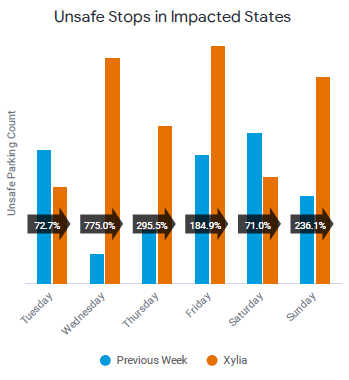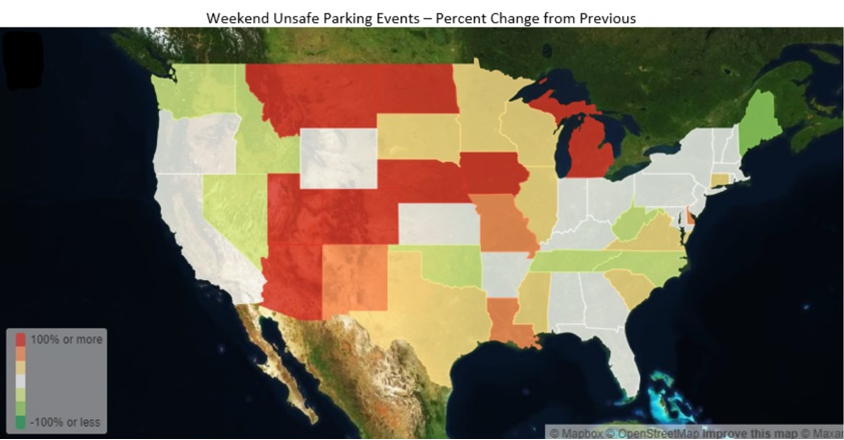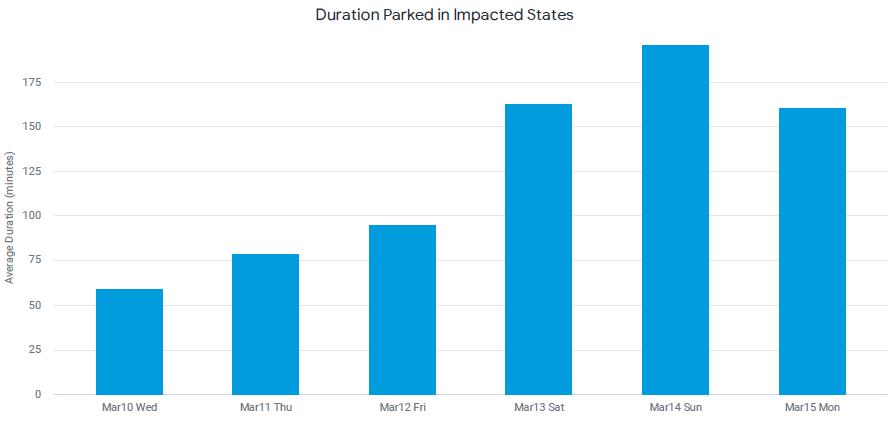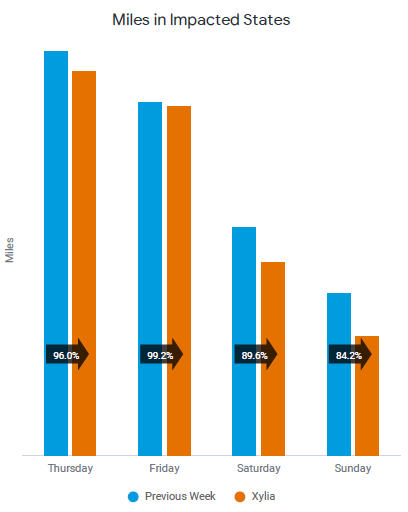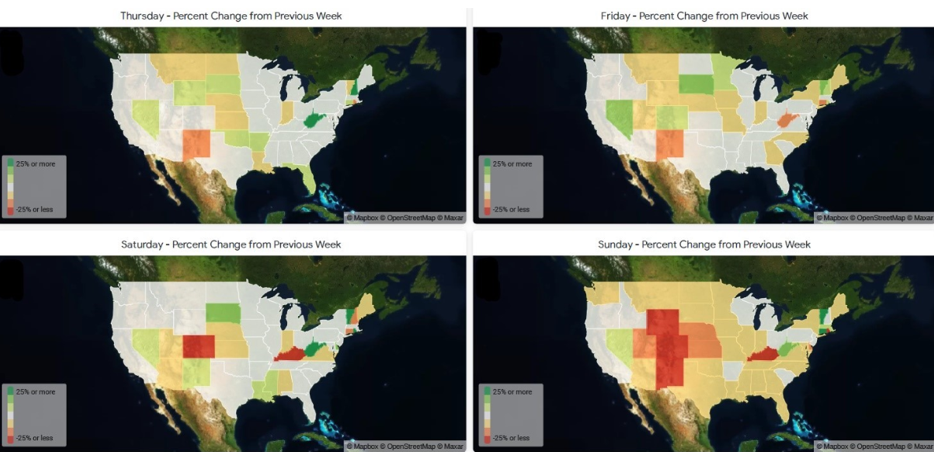
Spring may be at our door, but winter is making one hefty goodbye tour!
On the weekend of March 12, Winter Storm Xylia snowed down on Colorado and other parts of the western U.S. with significant force, leaving over 50,000 Coloradan households without power, halting 2,000 flights, and shutting down notable interstates in Colorado, Wyoming, Nebraska, and Arizona.
From March 11 through March 14, I worked with the rest of the data team to collect analyses of the winter storm’s impact on the transportation and supply chain sectors. Read on for what we found and how you can leverage our data to optimize your business planning.
Unsafe parking went up — a lot
In this graph, you can see that unsafe parking stops increased substantially compared to the week before, with Wednesday seeing a major spike that propelled the rest of the week’s percentages forward.
![]()
Below, we can see the drastic difference in unsafe parking across the country. Some states directly affected by the winter storm, like Colorado and Montana, witnessed substantial increases in dangerous parking events over the weekend. Interestingly, our data here also shows many neighboring states also felt the impact of the storm and related congestion, resulting in fewer known safe parking spots for truck drivers.
![]()
We also can see that the duration of those hazardous stops increased steadily over the weekend, with the most extended waiting times recorded on Sunday, March 14.
![]()
Reduced miles have a domino effect
To no surprise, the total miles driven in states impacted by the storm went down due to congested roadways, unsafe driving conditions, and power outages.
![]()
What’s most interesting in our map comparisons is the domino effect. We can see that total miles driven decreased in states impacted by the storm and then subsequently decreased through much of the country. From this evidence, we have further support that national weather emergencies directly impact and slow down the transportation of goods throughout the supply chain.
![]()
Get ahead to avoid getting left behind
Winter Storm Xylia is the eighth storm since September to surpass significant snow records. With growing climate change, seasonal storms are only expected to rise with increasing impact.
Our data findings are especially relevant to those in our industry because they signify the impact on transportation in affected states and the overall influence on the entire country. So, even if your fleet may not be located in a dangerous weather zone, your drivers may travel to these areas. Also, the impact of these national disasters could very well affect routes close to you, potentially causing you to miss customer deadlines if you’re not prepared.
Luckily, there are a variety of ways you can protect drivers and keep your fleet running as smoothly as possible — even amid the chaos of weather emergencies. You can equip drivers and your teams with insight into available, and most importantly safe, parking spaces, so they have a wide range of support if they’re unable to easily locate secure spots. Additionally, you can equip drivers with speed monitoring telematics specific to weather conditions, so they can know which speeds are safe for the conditions they’re driving in, including rain, snow, and sleet.
Finally, you can utilize routing and navigation technology to direct drivers along the best routes for their trips. With enhanced technology, you can take closed roads, traffic jams, and other critical route factors into account, so you’re assured every driver is on the best route every time. Keeping drivers safe and supported, no matter what mother nature throws their way, protects the wellbeing of your operation and business.
Gather additional insights from our Texas winter storm data findings, and keep up with our data thought leadership on the Omnitracs Road Ahead Blog!

